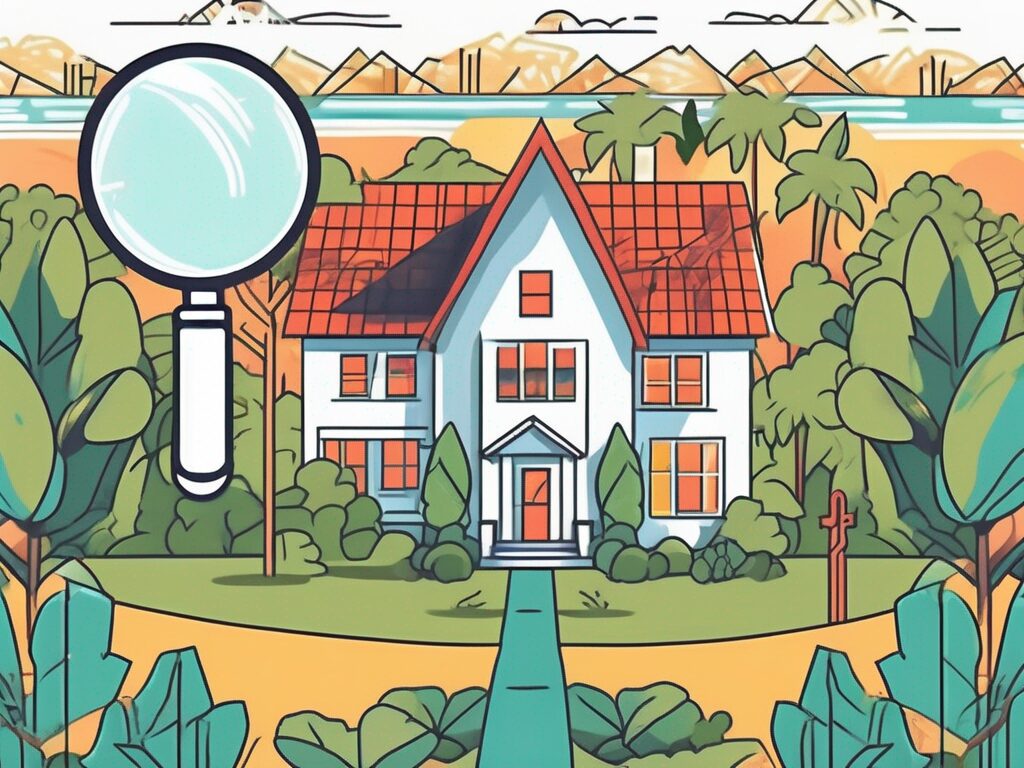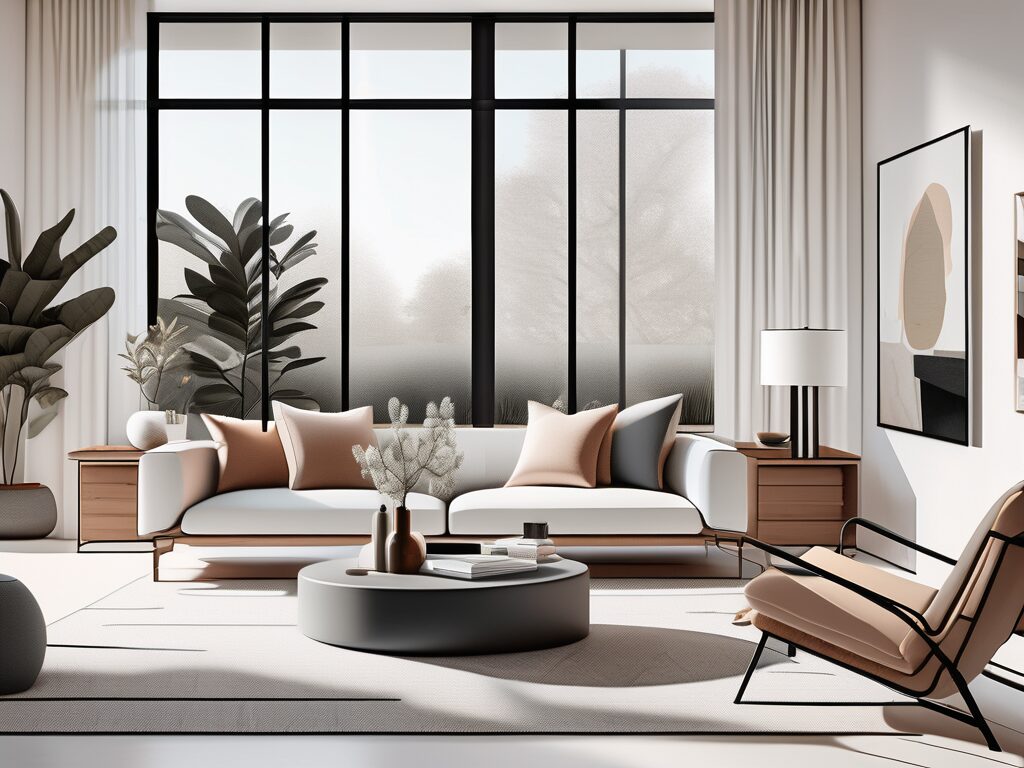
Agent A-Team or Solo Superhero? Finding the Right Real Estate Partner for Your Selling Journey in Wildwood Florida
When it comes to selling your home in Wildwood, Florida,…
January 29, 2024
In the competitive real estate market, it is crucial for sellers to take every opportunity to attract potential buyers. While a well-maintained property is important, home staging can take your presentation to the next level. This article will delve into the importance of home staging in real estate, how it influences buyers’ decisions, and the key techniques for successful home staging. We will also explore the incorporation of technology, the psychological aspect, the role of landscaping, and measuring the success of your home staging efforts.
When selling a home, first impressions are everything. Home staging is the art of preparing a property to appeal to the largest possible audience. By creating an inviting and visually appealing space, home staging allows potential buyers to envision themselves living in the house.
Home staging involves more than just tidying up and decluttering. It is a strategic process that involves carefully curating the furniture, decor, and lighting to create a cohesive and attractive atmosphere. The goal is to showcase the property’s best features and create a sense of warmth and comfort that will resonate with potential buyers.
One of the key benefits of home staging is its ability to enhance the overall appeal of a property. By highlighting its strengths and downplaying any weaknesses, staging can make a significant difference in how potential buyers perceive the space. A well-staged home can make a lasting impression and leave a positive impact on buyers, increasing their interest and potentially leading to higher offers.
Home staging plays a vital role in the real estate industry. It has become an essential part of the selling process, as it helps properties stand out in a competitive market. With the increasing popularity of online listings and virtual tours, staging has become even more crucial in capturing the attention of potential buyers.
Real estate agents and sellers alike recognize the importance of staging in attracting buyers and selling homes quickly. Staging allows them to present the property in its best light, showcasing its unique features and creating a desirable lifestyle that buyers can envision themselves enjoying. It helps create a connection between the buyer and the property, making it more likely for them to develop an emotional attachment and consider it as their future home.
The impact of home staging on buyer decisions cannot be underestimated. A well-staged property creates an emotional connection with buyers, allowing them to see the full potential of the home. It helps them imagine their own furniture, personal touches, and daily routines in the space, making it easier for them to envision themselves living there.
Staging also helps buyers overcome any objections or concerns they may have about a property. By addressing potential drawbacks and presenting solutions, staging can alleviate doubts and increase buyer confidence. For example, strategically placed furniture can help define the purpose of an awkward or underutilized space, making it more functional and appealing.
Furthermore, staging can make a property stand out among the competition. In a market where buyers have numerous options to choose from, a well-staged home can leave a lasting impression and differentiate itself from similar properties. It can create a sense of urgency and desirability, prompting buyers to act quickly and potentially submit higher offers.
In conclusion, home staging is a powerful tool in the real estate industry. It enhances a property’s overall appeal, influences buyer decisions, and helps sellers achieve their desired outcomes. By investing in professional staging, sellers can maximize their chances of selling quickly and at a higher price, while buyers can find themselves irresistibly drawn to a home that feels like their own.
Successful home staging is a combination of various techniques aimed at maximizing a property’s appeal. Let’s explore some key techniques that will make your home stand out:
Lighting plays a crucial role in showcasing a home’s features. Natural light should be maximized by removing heavy drapes and allowing sunlight to flood the rooms. This not only brightens up the space but also creates a sense of openness and warmth. Additionally, strategic placement of lamps and fixtures can further enhance the ambiance, creating a cozy and inviting atmosphere.
Imagine walking into a room with soft, warm lighting that accentuates the beautiful hardwood floors and highlights the elegant furniture. The carefully placed lamps create a soothing glow, making the space feel like a tranquil oasis. Potential buyers can easily envision themselves relaxing in this serene environment, making them more likely to fall in love with the property.
When staging a home, it’s essential to create a neutral canvas that appeals to a wide range of buyers. Neutral colors on walls, furniture, and decor create a clean and fresh look, allowing potential buyers to envision their own personal style in the space. Shades of white, beige, and gray are popular choices as they create a timeless and versatile backdrop.
Imagine stepping into a beautifully staged living room with walls painted in a soft, inviting shade of beige. The neutral color scheme creates a sense of tranquility and harmony, allowing potential buyers to focus on the architectural details and envision their own furniture and artwork in the space. By using neutral colors, you create a blank canvas that allows buyers to imagine the possibilities and make the home their own.
Proper furniture placement can transform a room and make it appear more spacious. Consider the flow of each room and arrange furniture in a way that maximizes space and highlights the functionality of the area. Less clutter and well-chosen furniture create an open and inviting environment.
Imagine walking into a beautifully staged bedroom where the bed is positioned against a large window, allowing natural light to gently illuminate the room. The nightstands and dressers are strategically placed to create a sense of balance and harmony. The absence of unnecessary clutter and the careful selection of furniture make the room feel spacious and organized, giving potential buyers a clear vision of how they can utilize the space.
By strategically placing furniture, you can create a flow that guides potential buyers through the home, showcasing each room’s purpose and functionality. This attention to detail not only enhances the overall aesthetic appeal but also helps buyers visualize themselves living in the space.
As technology continues to advance, so does the world of home staging. With the introduction of innovative approaches such as virtual staging and augmented reality, the process of showcasing properties has been revolutionized.
Virtual staging has emerged as a game-changer in the world of home staging. This approach utilizes computer-generated imagery (CGI) to transform empty spaces into fully furnished rooms. By digitally adding furniture, decor, and even artwork, virtual staging allows potential buyers to see the full potential of the property, even before physically visiting it.
One of the key advantages of virtual staging is its flexibility. With a few clicks, a vacant room can be transformed into a cozy living area, a stylish bedroom, or a functional home office. This versatility enables real estate agents and homeowners to cater to different target markets and showcase the property’s potential in various ways.
Moreover, virtual staging eliminates the need for physical furniture and accessories, making it a cost-effective solution for showcasing properties. It saves time and resources that would otherwise be spent on purchasing, transporting, and arranging physical furniture. Additionally, virtual staging allows for quick and easy changes to the design, enabling real estate professionals to adapt to different buyer preferences and trends.
Another innovative approach in home staging is the utilization of augmented reality (AR) technology. AR applications have opened new possibilities for showcasing properties by providing potential buyers with an interactive and immersive experience.
With AR technology, buyers can visualize different furniture arrangements and design options within a given space. By simply using their smartphones or tablets, they can virtually place furniture, experiment with colors and textures, and even explore different architectural modifications. This interactive experience enhances their engagement and helps them make confident purchasing decisions.
Furthermore, augmented reality allows buyers to envision themselves living in the space. They can personalize the design according to their preferences, making it easier for them to connect emotionally with the property. This emotional connection plays a crucial role in the decision-making process, as it helps buyers envision their future lifestyle and create a sense of attachment to the property.
Additionally, AR technology provides real estate professionals with valuable data and insights. By analyzing the interactions and preferences of potential buyers within the AR applications, agents can gain a deeper understanding of their clients’ needs and preferences. This information can then be used to tailor marketing strategies and further enhance the overall home staging experience.
In conclusion, the incorporation of technology in home staging has revolutionized the industry. Virtual staging and augmented reality have provided innovative ways to showcase properties, allowing potential buyers to visualize the full potential of a space and make confident purchasing decisions. As technology continues to advance, the possibilities for enhancing the home staging process are endless.
Creating an emotional connection with potential buyers is a powerful tool in home staging. By appealing to their senses and evoking positive emotions, you can significantly increase the chances of selling a property. Here are a few techniques to consider:
When potential buyers step into a staged home, they should immediately feel a sense of warmth and comfort. By incorporating elements that evoke positive emotions, such as family photos or cozy textiles, you can create a warm and homely atmosphere. Imagine walking into a living room with a beautifully framed photo of a happy family on the wall. This simple addition can instantly make buyers feel a sense of belonging and envision themselves living happily in the space.
Another way to create an emotional connection is by carefully selecting the color palette for each room. Colors have a profound impact on our emotions and can influence how we perceive a space. For example, soft blues and greens can create a calming and serene environment, while warm yellows and oranges can evoke feelings of happiness and energy. By strategically using colors that align with the desired emotional response, you can create a space that resonates with potential buyers on a deeper level.
When it comes to creating a memorable experience for potential buyers, scents play a crucial role. Our sense of smell is closely linked to our emotions and can trigger powerful memories and associations. In fact, studies have shown that certain scents can significantly impact a buyer’s perception of a property.
Consider using fresh scents, such as lemon or lavender, to create a clean and inviting atmosphere that leaves a lasting impression on potential buyers. The smell of freshly cut lemons can evoke a sense of cleanliness and freshness, making buyers feel like they are stepping into a well-maintained and cared-for home. On the other hand, the soothing aroma of lavender can create a sense of relaxation and tranquility, making buyers feel instantly at ease in the space.
It’s important to note that while scents can be powerful in creating a positive emotional response, they should be used sparingly and with consideration for potential allergies or sensitivities. Opting for natural and subtle scents is often the safest and most effective approach.
By incorporating these techniques into your home staging process, you can tap into the psychological aspect of buying a home and create an environment that not only appeals to potential buyers visually but also emotionally. Remember, selling a home is not just about showcasing its physical features; it’s about creating an experience that resonates with buyers and makes them envision a future in the space.
When it comes to selling your home, it’s important not to overlook the exterior. The first impression potential buyers get when they see your property can greatly impact their decision-making process. That’s where landscaping comes in. By implementing effective landscaping techniques, you can enhance your home staging efforts and make your property even more appealing. Let’s explore some of these techniques in detail:
One of the key aspects of landscaping for home staging is enhancing curb appeal. A well-maintained front yard can immediately create a positive first impression. To achieve this, start by ensuring that your lawn is neatly trimmed and free of any unsightly weeds. A lush and healthy lawn can make a significant difference in the overall appearance of your property.
In addition to a well-kept lawn, consider adding some colorful flowers to your front yard. Flowers can add a touch of vibrancy and beauty to the landscape, making it more visually appealing. Choose flowers that complement the style and color scheme of your home, and strategically place them in flower beds or pots to create an inviting atmosphere.
Another important aspect of enhancing curb appeal is updating any worn-out pathways or fences. Cracked or uneven pathways can give the impression of neglect, so it’s essential to repair or replace them if necessary. Similarly, a fresh coat of paint or stain on fences can instantly revitalize the look of your property.
By paying attention to these small landscaping improvements, you can significantly increase the chances of attracting potential buyers and making a lasting impression.
If your property has outdoor spaces such as patios or decks, it’s crucial not to neglect their potential. These areas can be transformed into attractive and functional spaces that showcase the potential for outdoor living.
Consider staging these outdoor areas with comfortable furniture that invites potential buyers to envision themselves relaxing and entertaining in the space. Cozy lighting, such as string lights or lanterns, can create a warm and inviting ambiance, especially during evening showings. Additionally, adding attractive decor elements like outdoor rugs, throw pillows, and potted plants can further enhance the overall appeal of the outdoor space.
Highlighting the potential for outdoor living spaces can add significant value to your home. Many buyers are looking for properties that offer versatile living areas, both indoors and outdoors. By showcasing the outdoor spaces through strategic staging, you can help potential buyers see the full potential of your property and increase their interest.
In conclusion, landscaping plays a vital role in home staging, especially when it comes to the exterior of your property. Enhancing curb appeal through well-maintained lawns, colorful flowers, and updated pathways or fences can create a positive first impression. Additionally, staging outdoor areas with comfortable furniture, cozy lighting, and attractive decor can showcase the potential for outdoor living spaces, adding significant value to your home. So, don’t underestimate the power of landscaping in making your property more appealing to potential buyers.
Once you have implemented your home staging techniques, it’s essential to assess their effectiveness. Consider the following indicators:
Monitor the number of showings, the time spent on the market, and any increase in offers. These indicators can provide valuable insights into the success of your staging efforts.
If you find that your staging efforts are not generating the desired results, it may be time to reevaluate your strategy. Seek feedback from real estate professionals, potential buyers, and even consider the expertise of a professional home staging company. Making adjustments along the way will increase your chances of attracting buyers and achieving a successful sale.
In conclusion, effective home staging techniques can significantly impact a buyer’s decision-making process. By understanding the importance of home staging, incorporating key techniques, leveraging technology, considering the psychological aspect, focusing on landscaping, and measuring success, sellers can attract potential buyers and achieve a successful sale. With innovation and thoughtful execution, sellers can create a visually appealing space that stands out in the competitive real estate market.

If you want the Richr team to help you save thousands on your home just book a call.
 Book a call
Book a call